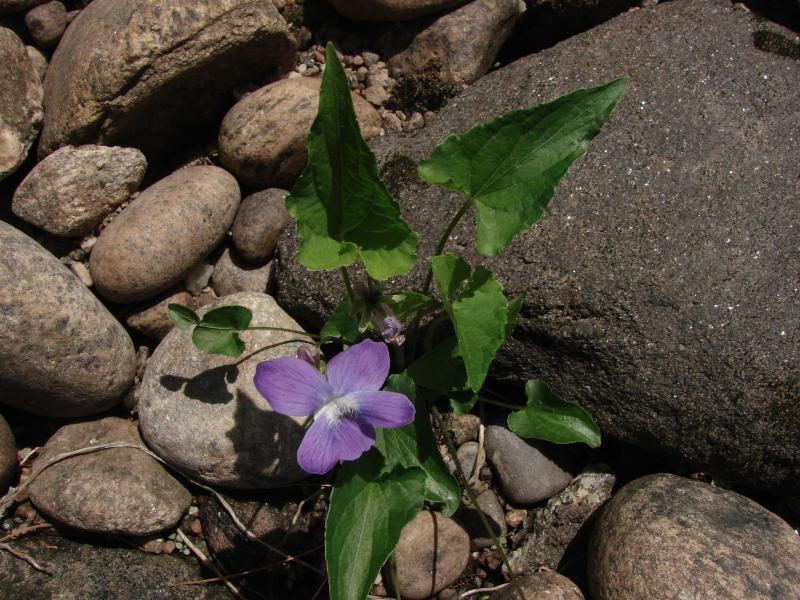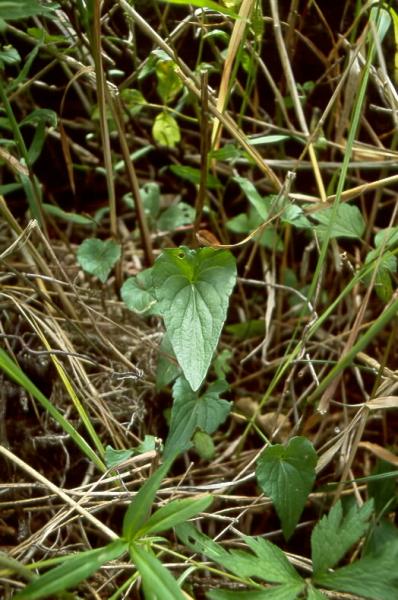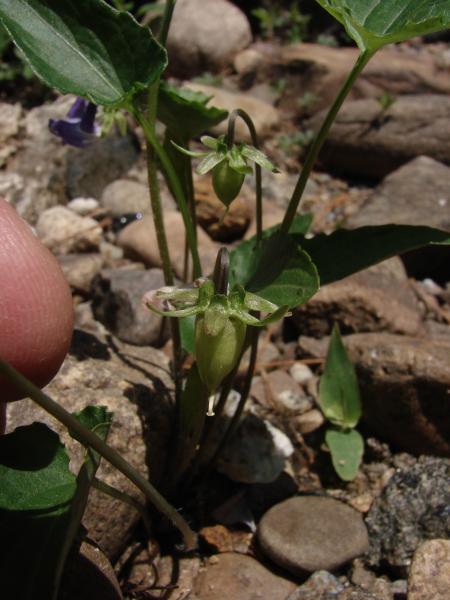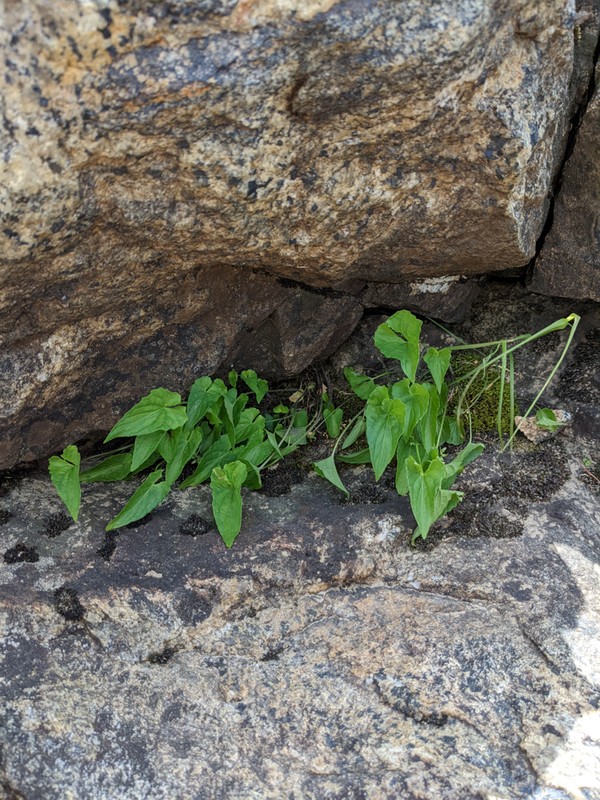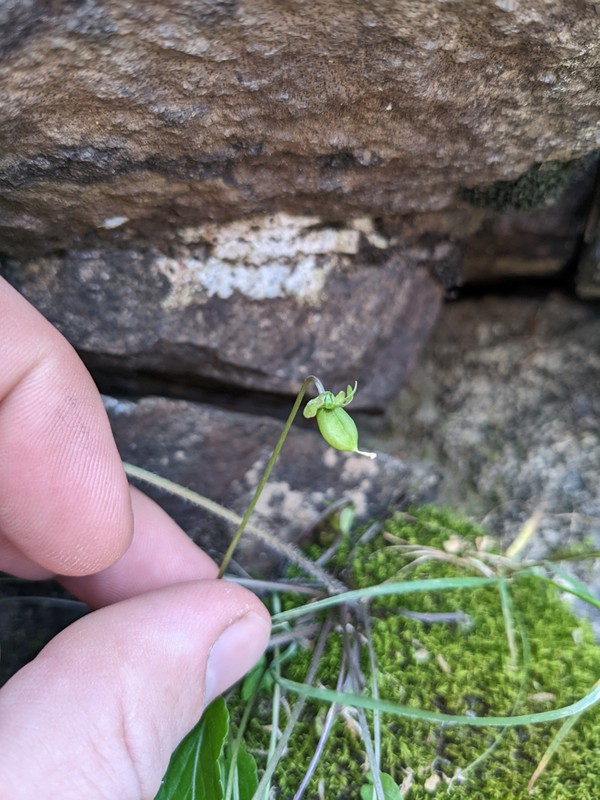New England Violet
Viola novae-angliae House
- Class
- Dicotyledoneae (Dicots)
- Family
- Violaceae (Violet Family)
- State Protection
- Endangered
Listed as Endangered by New York State: in imminent danger of extirpation in New York. For animals, taking, importation, transportation, or possession is prohibited, except under license or permit. For plants, removal or damage without the consent of the landowner is prohibited.
- Federal Protection
- Not Listed
- State Conservation Status Rank
- S1
Critically Imperiled in New York - Especially vulnerable to disappearing from New York due to extreme rarity or other factors; typically 5 or fewer populations or locations in New York, very few individuals, very restricted range, very few remaining acres (or miles of stream), and/or very steep declines.
- Global Conservation Status Rank
- G4
Apparently Secure globally - Uncommon in the world but not rare; usually widespread, but may be rare in some parts of its range; possibly some cause for long-term concern due to declines or other factors.
Summary
State Ranking Justification
There is one verified occurrence, no other historical occurrences.
Short-term Trends
Small population.
Conservation and Management
Threats
Not high.
Conservation Strategies and Management Practices
Resurvey every 5 years.
Habitat
Habitat
The only known site for this species in New York is a riverside ice meadow. The site recieves extreme scouring by ice and water, creating open habitat with a substrate of cobbles and marble bedrock outcrops. Considering the habitats Viola novae-angliae occupies in other states (Ballard 1988), the scouring action rather than the calcareous substrate may be the key habitat feature (New York Natural Heritage Program 2011). Moist to wet, gravel and rocks (Haines 1998). Dry to mesic-dry, circumneutral or slightly acidic substrates, being partial to very thin soil over bedrock (Ballard 1988). Gravel, wet rocks, shores and meadows (Fernald 1970). Rock crevices along Great Lakes or beside cold, rapidly flowing streams (Russell 1965).
Associated Ecological Communities
- Riverside ice meadow
(guide)
A meadow community that occurs on gently sloping cobble shores and rock outcrops along large rivers in areas where winter ice floes are pushed up onto the shore, forming an ice pack that remains until late spring. The ice scours the meadow, cutting back woody plants.
Associated Species
- Carex buxbaumii (brown bog sedge)
- Triantha glutinosa (sticky false asphodel)
- Trichophorum clintonii (Clinton's club sedge)
Range
New York State Distribution
Southern Adirondacks.
Identification Comments
Identifying Characteristics
Distinguishing characteristics: leaves mostly narrowly cordate-ovate, triangular or ovate-oblong with only minute pubescence varying to complete glabrous; larger mature blades mostly 3.5-7 cm long and 2-5 cm broad, with only 6-12 teeth on each half; petioles villous only at the base, sepals and auricles with cilia; seeds plump, 1-1.6 mm thick. Best life stage for ID: with flowers and capsules. Characteristics needed to ID: entire plant with roots, leaves and flowers/fruits.
Similar Species
Russell (1965) states that it is difficult to separate Viola novae-angliae from V. sagittata. The leaf blades of V. novae-angliae are reportedly not toothed but small and somewhat triangular. Similar to other taxa within the V. sororia and V. sagittata complex.
Best Time to See
Surveys for Viola novae-angliae should be conducted when it is in flower, typically from late May through June.
- Vegetative
- Flowering
- Fruiting
The time of year you would expect to find New England Violet vegetative, flowering, and fruiting in New York.
New England Violet Images
Taxonomy
New England Violet
Viola novae-angliae House
- Kingdom Plantae
- Phylum Anthophyta
- Class Dicotyledoneae
(Dicots)
- Order Violales
- Family Violaceae (Violet Family)
- Order Violales
- Class Dicotyledoneae
(Dicots)
- Phylum Anthophyta
Synonyms
- Viola sororia auct. non L.
- Viola x conturbata House [in part.]
Additional Resources
References
Ballard, H. E. 1988. Spring observations on Midwestern Viola novae-angliae. Unpublished notes to the Minnesota Heritage Program, Minneapolis. 6 pp.
Fernald, M.L. 1950. Gray's manual of botany. 8th edition. D. Van Nostrand, New York. 1632 pp.
Gleason, Henry A. and A. Cronquist. 1991. Manual of Vascular Plants of Northeastern United States and Adjacent Canada. The New York Botanical Garden, Bronx, New York. 910 pp.
Holmgren, Noel. 1998. The Illustrated Companion to Gleason and Cronquist's Manual. Illustrations of the Vascular Plants of Northeastern United States and Adjacent Canada. The New York Botanical Garden, Bronx, New York.
Mitchell, Richard S. and Gordon C. Tucker. 1997. Revised Checklist of New York State Plants. Contributions to a Flora of New York State. Checklist IV. Bulletin No. 490. New York State Museum. Albany, NY. 400 pp.
New York Natural Heritage Program. 2010. Biotics database. New York Natural Heritage Program. New York State Department of Environmental Conservation. Albany, NY.
New York Natural Heritage Program. 2024. New York Natural Heritage Program Databases. Albany, NY.
Reschke, Carol. 1990. Ecological communities of New York State. New York Natural Heritage Program, New York State Department of Environmental Conservation. Latham, NY. 96 pp. plus xi.
Russell, Norman H. (1965). Violets (Viola) of central and eastern United States: An introductory survey. Sida 2(1):1-113.
Weldy, T. and D. Werier. 2010. New York flora atlas. [S.M. Landry, K.N. Campbell, and L.D. Mabe (original application development), Florida Center for Community Design and Research http://www.fccdr.usf.edu/. University of South Florida http://www.usf.edu/]. New York Flora Association http://newyork.plantatlas.usf.edu/, Albany, New York
Zaremba, Robert E. 1991. Corrections to phenology list of April 9, 1991.
Links
About This Guide
Information for this guide was last updated on: October 25, 2022
Please cite this page as:
New York Natural Heritage Program. 2024.
Online Conservation Guide for
Viola novae-angliae.
Available from: https://guides.nynhp.org/new-england-violet/.
Accessed July 26, 2024.
